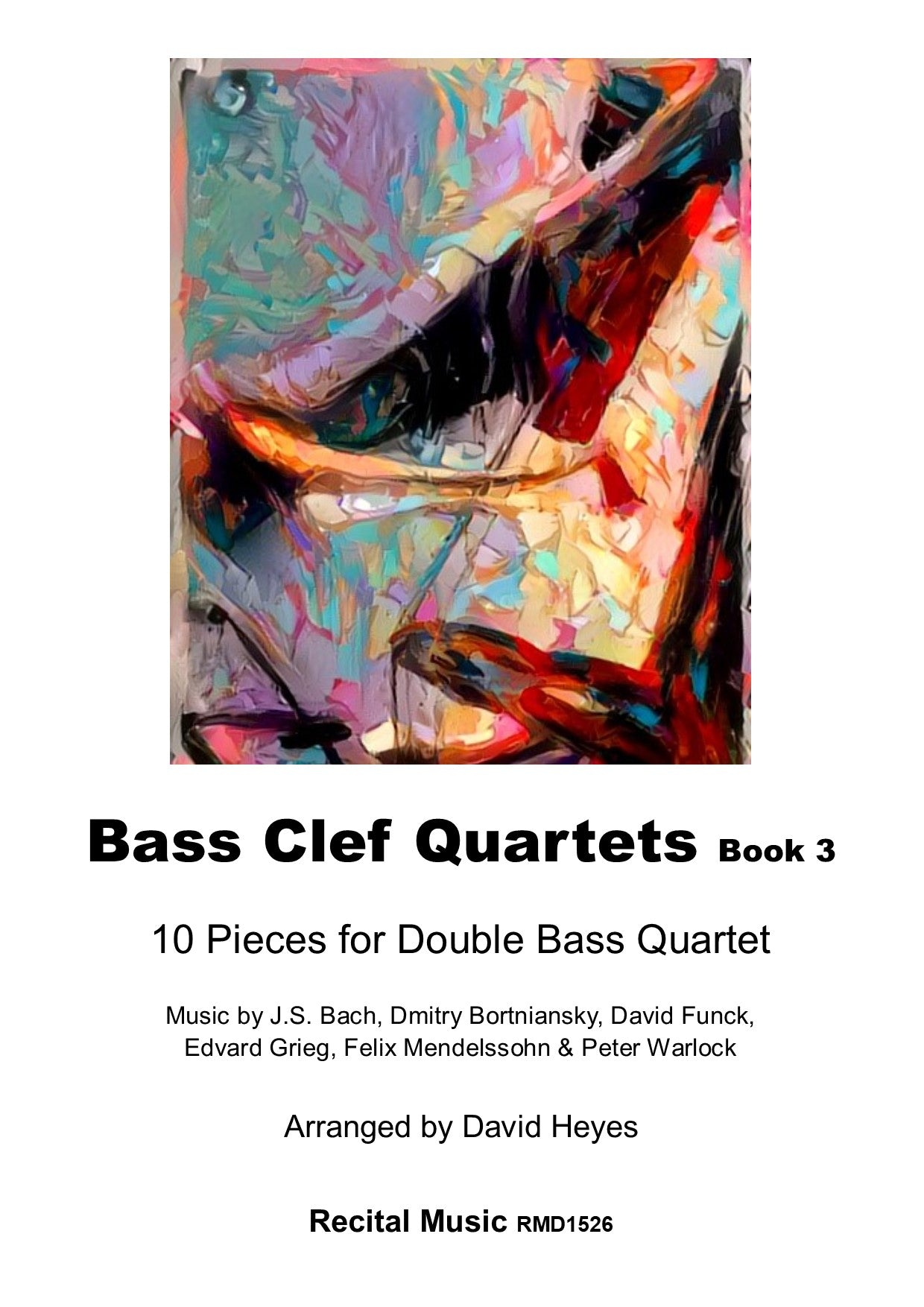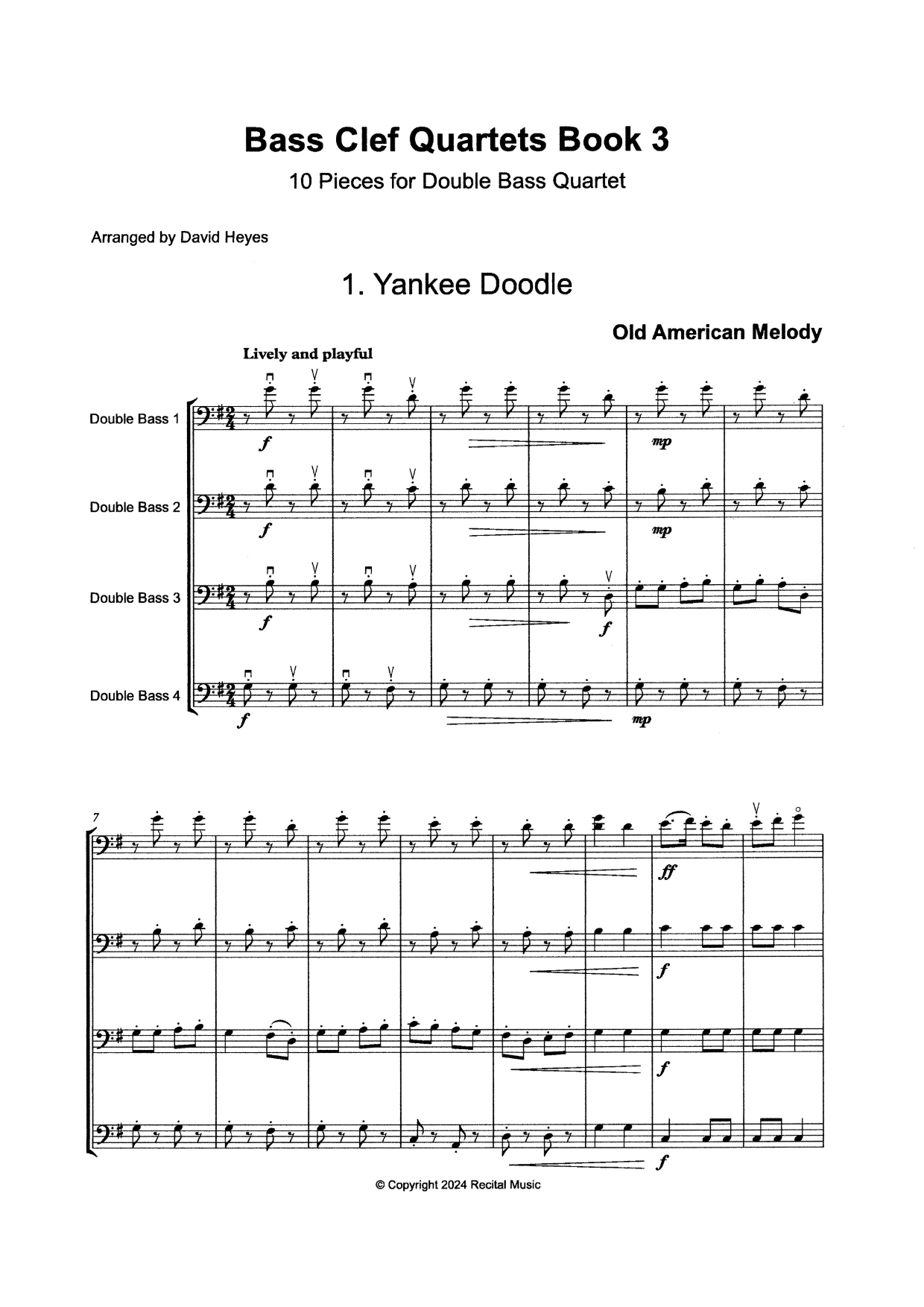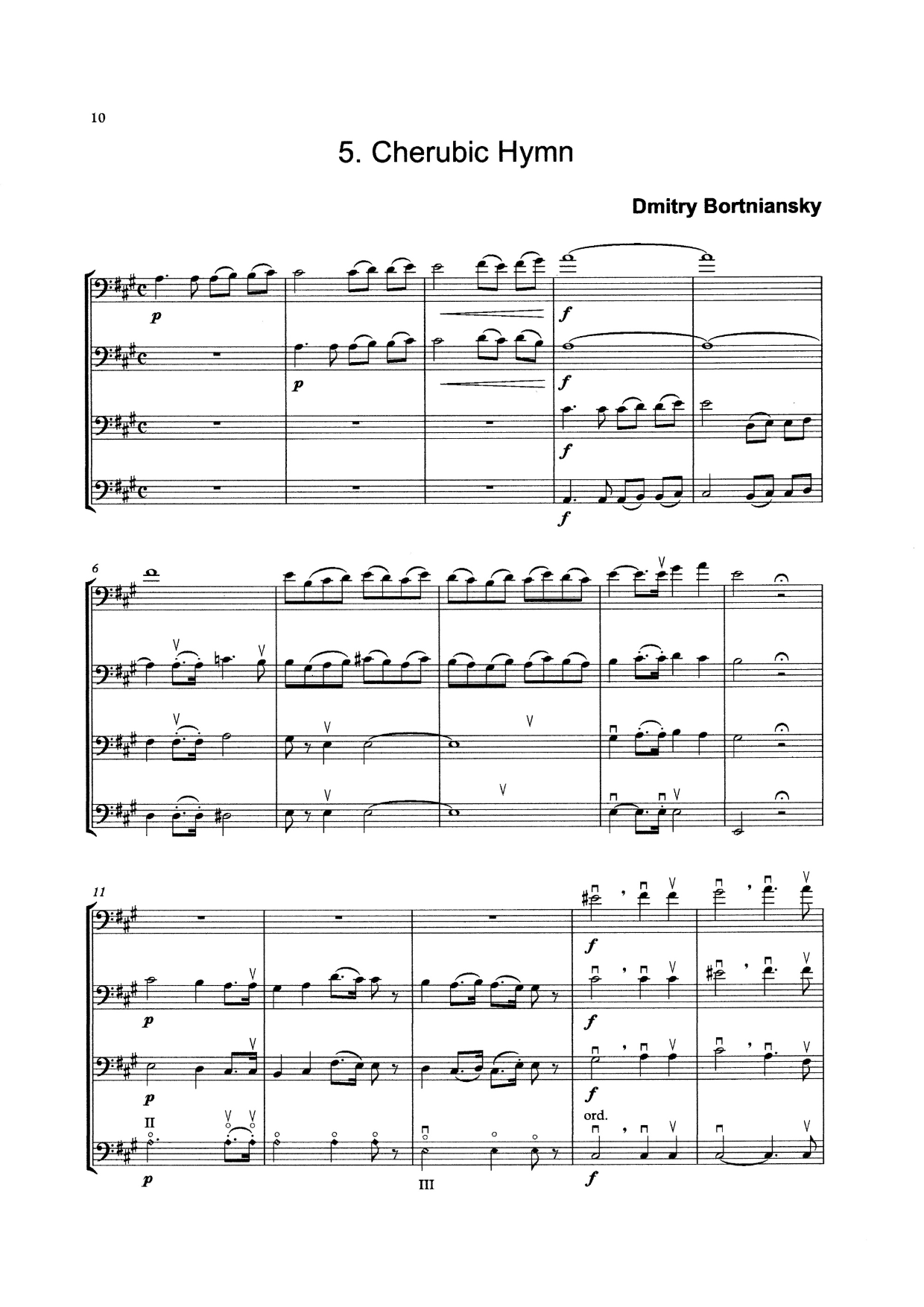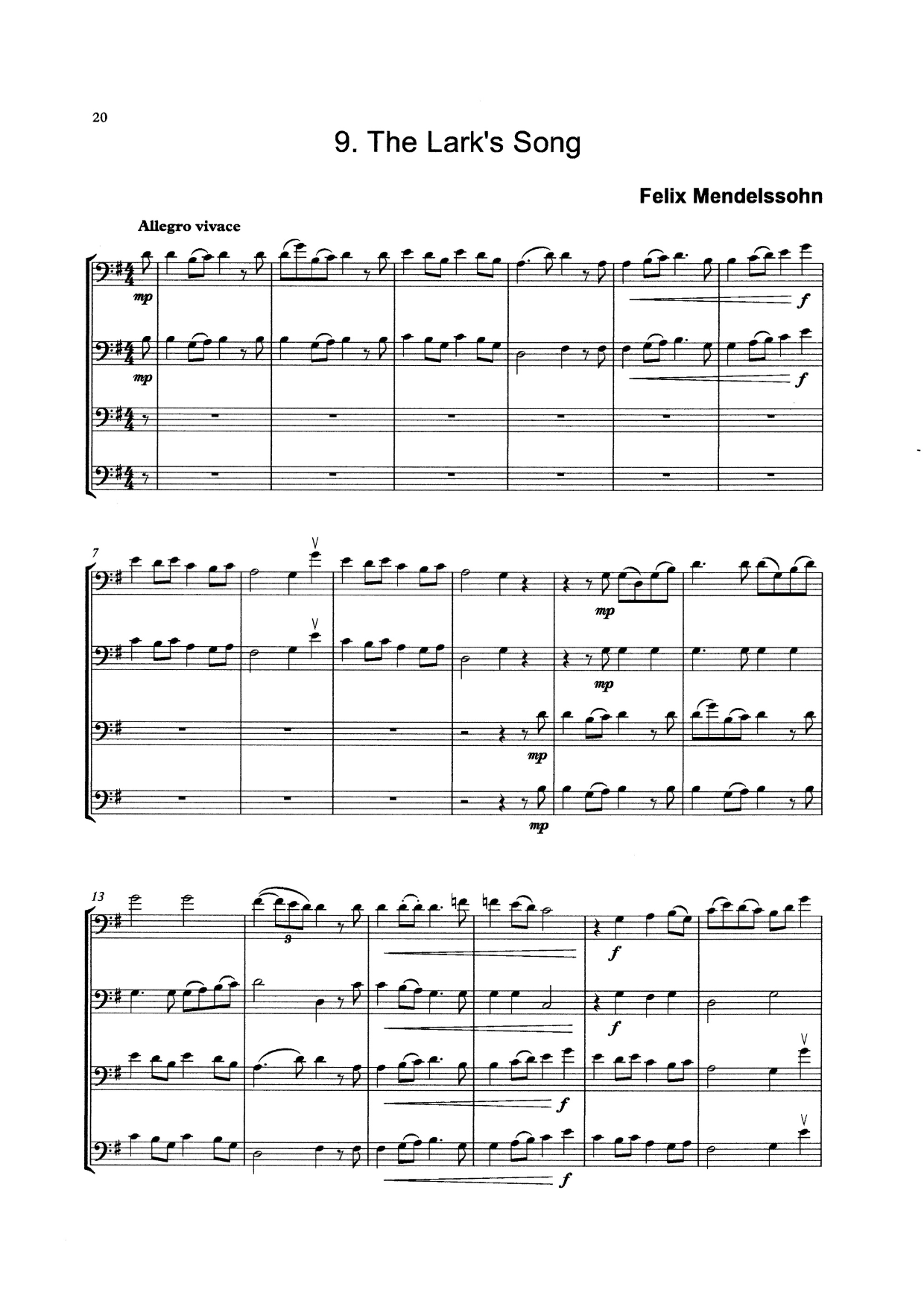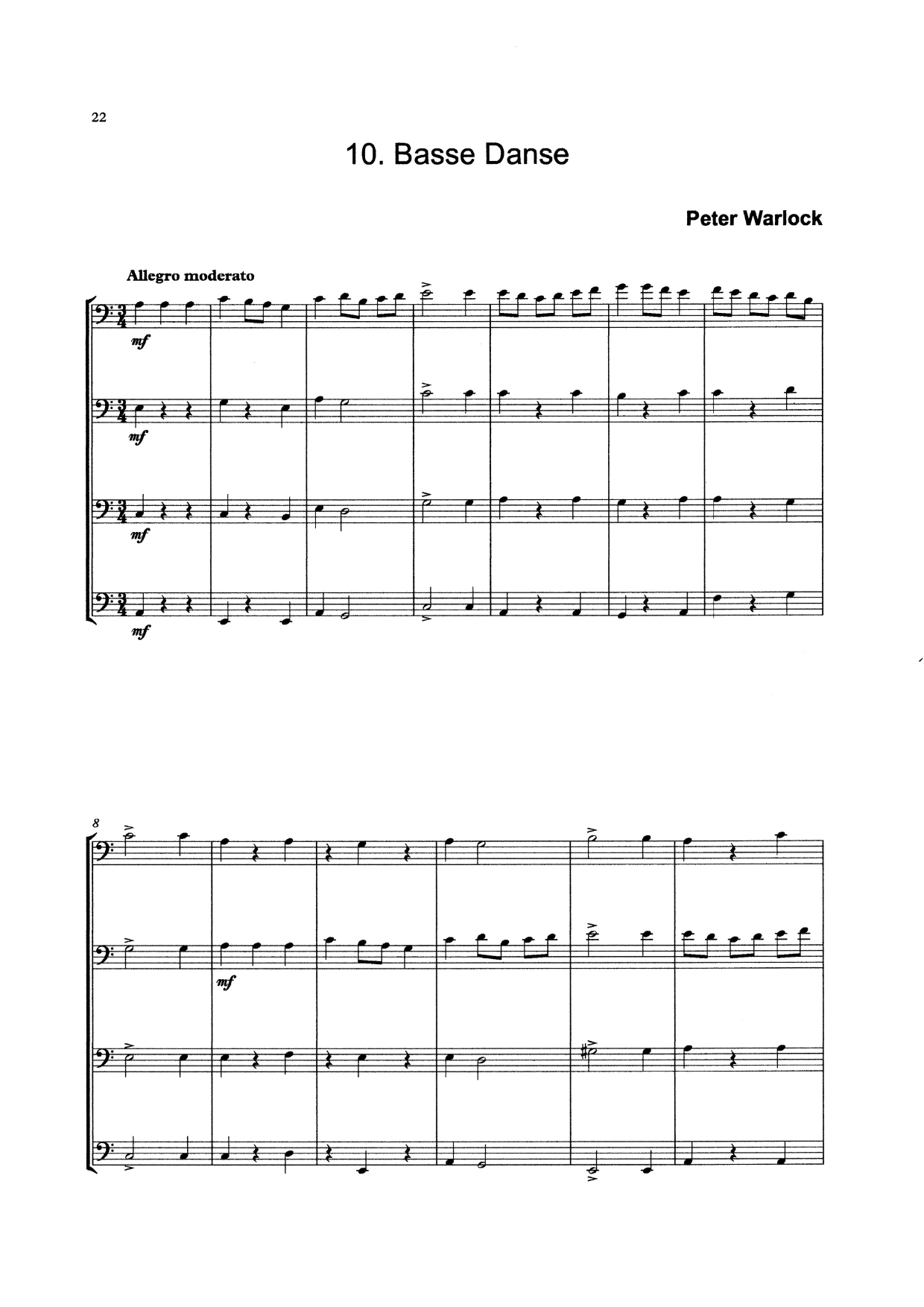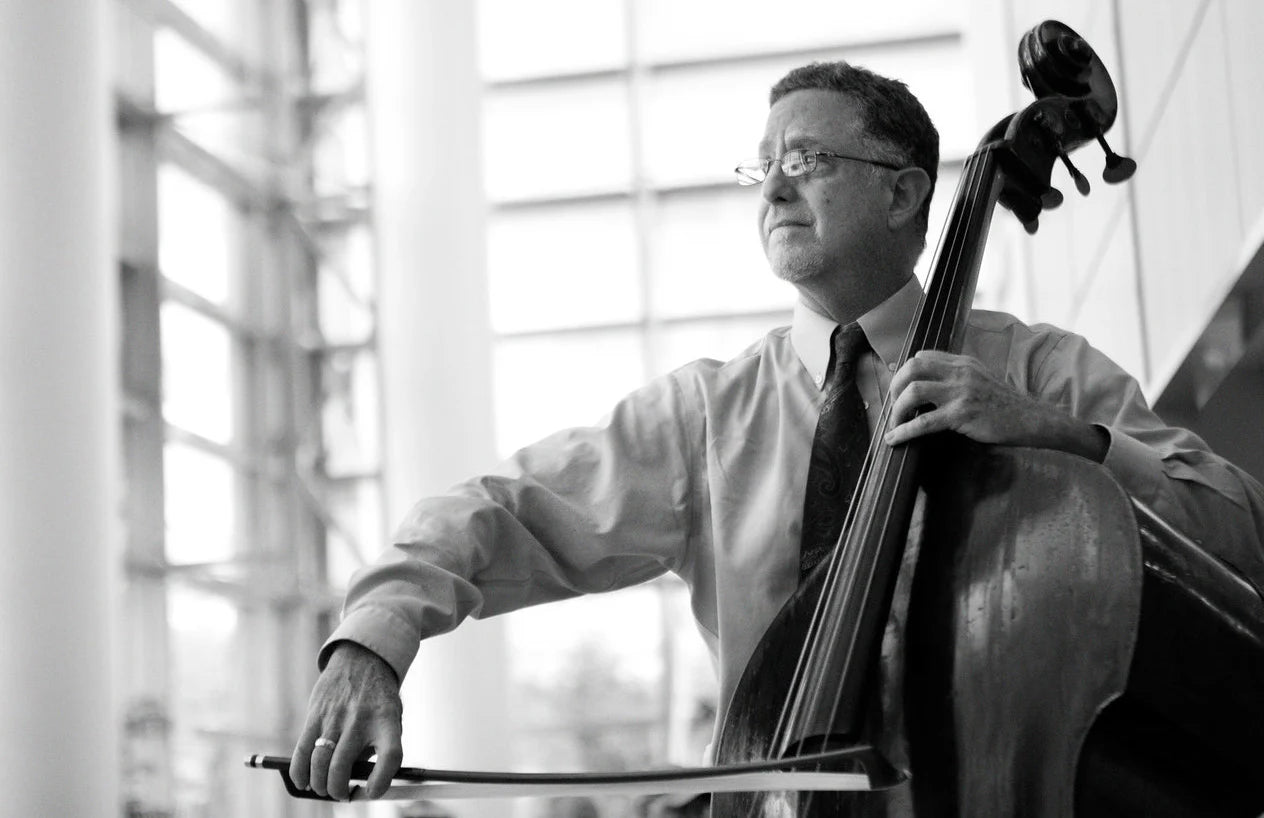David Heyes
Bass Clef Quartets Book 3: 10 Pieces for double bass quartet (arr. Heyes)
Bass Clef Quartets Book 3: 10 Pieces for double bass quartet (arr. Heyes)
Couldn't load pickup availability
About the Book
Bass Clef Quartets Book 3 brings together an inventive and diverse collection of pieces spanning over four centuries of music. There are easy and accessible musical and technical challenges in the orchestral register of the double bass, remaining in bass clef throughout, with the addition of pizzicato and simple harmonics to create clarity and open textures.
Some of the shorter pieces can be repeated, with the addition of dynamic contrasts, and the pieces are ideal for study purposes or as recital repertoire.
The edition includes a score and four separate parts.
Table of Contents
1. Yankee Doodle dates back to the 18th-century in a number of versions which often differ in terms of words and melody. Now accepted as a 'traditional' national song, it is one of America's most recognisable 'folk-melodies' and has been used for films, television and by classical composers for decades. This arrangement is playable by bass quartet or larger forces and was arranged with a range of abilities in mind. This is a fun addition to the beginner-intermediate bass ensemble repertoire and with a recognisable theme which should have instant audience appeal.
2. Pavane was included by Peter Warlock (1894-1930) in his Capriol Suite (1926) and is based on a Renaissance dance from Orchésographie by Thoinot Arbeau, first published in 1589. The piece is quite short and one performance option would be for everyone to play bass 4, without repeat, then add bass 3 followed by bass 2, and when bass 1 is introduced, to play the piece as a quartet, with the repeat and possibly the addition of different dynamics.
3. La Gamba is from Six Italian Dances from the late 16th-century, arranged for string quartet by Peter Warlock. The piece is a lively and energetic dance, with a strong rhythmic momentum, and it could be repeated several times, possibly also played pizzicato, to add variety and contrast.
4. Cantata No.94 (Was frag ich nach der Welt / What do I ask about the world) by J.S. Bach (1685-1750) was composed in Leipzig in 1724 and the chorale is the eighth and final movement. The original chorale has been slightly amended to enable it to be performed entirely in bass clef, but it is still a wonderful exercise in ensemble playing for every bass quartet.
5. Dmitry Bortniansky (1751-1825) was a Russian composer, harpsichordist and conductor and served at the Imperial Court of Catherine the Great. He wrote operas and instrumental works but is particularly remembered for his liturgical music. His Cherubic Hymns are for unaccompanied SATB choir and this excerpt combines effective choral and contrapuntal writing which transcribes beautifully for bass quartet.
6. Song of the Volga Boatmen is a well-known traditional Russian song, sung by burlaks, or barge-haulers, on the Volga River, which was collected by Mily Balakirev and first published in 1866. This arrangement is based on a colourful and inventive version by Granville Bantock (1868-1946), originally for unaccompanied male voices, which has something of interest for each player. The addition of pizzicato and simple harmonics adds colour and contrast.
7. Impromptu by Edvard Grieg (1843-1907) was composed c.1896 and is a short and effective miniature for male voice choir. A number of changing moods create interest and variety, with effective chordal writing alongside a bright and rhythmic energy. It ends suddenly with a quiet and unexpected three-bar coda and there are opportunities for bassists to demonstrate the many colours and timbres available to the inventive bass quartet.
8. David Funck (1648-c.1699) was born in Bohemia, spent some time in Italy before returning to Germany, and was an accomplished writer, theorist, and composer. Courant is from Stricturæ Viola-di Gambicæ, a collection of 43 dance suites for four viols, and could be repeated a number of times to increase its length. The addition of dynamics, with or without vibrato, will create a wealth of colours and timbres and it could even be played pizzicato.
9. The Lark’s Song by Felix Mendelssohn (1809-1847) is originally a vocal canon, but for two sets of two parts. Basses 1 and 2 play the opening canon, which is taken up by basses 3 and 4 after ten bars, and the canon continues until the coda, which begins on the final note of bar 30. The vocal writing is simple and effective, and this is a new and inventive perspective on the usual vocal canon.
10. Basse Danse is the opening movement of Peter Warlock’s Capriol Suite and is and is based on a Renaissance dance from Orchésographie by Thoinot Arbeau, first published in 1589. It is a fun and vibrant piece which transcribes well for bass quartet and the melodic interest is shared between the four players. It’s rhythmic energy and joie de vivre is popular with performers and audiences alike.
